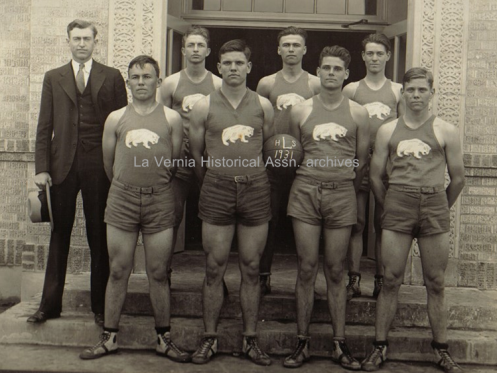Texas has a rich football tradition and has produced many legendary football teams, players – and mascots! The first organized high school football game to be played in the Lone Star State is believed to have been played on Christmas Eve 1892 on Galveston Island. Football is nearly as old as the state of Texas itself, and no doubt, has been a significant part of the state’s culture and history.
While the game brings fans together, it’s the mascot that raises their spirits! So, how did these mascots become the face of some of our favorite teams? Local historians provide a glimpse into the origins of a few of the mascots we love.
The Cuero Gobblers
Like many small Texas towns, Cuero has a rich history in the agricultural industry. And just like many of those communities, Cuero chose to celebrate a farming product that made them famous. In this case, the turkey. In the early days, for a farmer to get his turkey flock from the farm to town, he had to herd them on foot, much like a cattle drive. In 1912, Cuero began celebrating the “Turkey Trot.” The celebrations were so elaborate they were held once every four years instead of annually.
The Cuero High School football program started in 1911; however, it was not standard at that time to have a mascot. The earliest record of the football team being called the Gobblers was found in The Cuero Daily Record on November 10, 1925, where they are referred to as the Turkey Gobblers.
Daule High School was the African American school in Cuero. They, too, had a football program and called themselves the Black Gobblers. Eventually, they asserted their individuality and were known as the Daule Rams, with school colors of purple and white, until the closure of the school in 1965.
Even though the turkey drives eventually came to an end, the Gobbler lives on. Cuero has over one hundred years of football history and has demonstrated time and again its pride in the Gobbler teams. In fact, the Cuero Heritage Museum has preserved their football history with an exhibit dedicated to the two teams of Cuero.
The Yoakum Bulldogs
The “Yoakum Community: The First Hundred Years, 1887-1987,” records that football began in Yoakum in 1917 when a small ragtag team of high school boys played their first game. They called themselves the “Sunsets” because they played in Sunset Park.
At the end of the 1927 season, the team met to choose a team name and uniform colors. Yoakum opted to choose a symbol that embodied their qualities and personality. The name chosen was “Bulldogs,” and the colors were blue and white. Luther Harper, a member of that 1927 team, wrote that the name was chosen because of the team’s scrappy style of play.
The 1928 team was the first to play under the new Bulldog name, and the Bulldog mascot carries on the tradition today.
The La Vernia Bears
The late Elsie Witte Ferry was an elementary school student in 1931, who attended the first La Vernia ISD building on the current campus. According to her, the mascot has “always been the Bears.” The original school song references the school colors as blue and white.
The earliest sports school photos also show the mascot as the Bears, like the photo above from the La Vernia Historical Association of the 1931 La Vernia basketball team wearing jerseys with the Bears logo. A San Antonio Express newspaper article from 1931 stated, “the Lavernia Bears now stand at the top undefeated.” You can find more memories like this in the book, “The History of La Vernia Schools featuring Spirits & Sports 1870–1999.”
The Gonzales Apaches
The Gonzales area is familiar with the story of the first skirmish of the Texas Revolution, so it would be fitting that the residents would choose a mascot that represents bravery. However, like La Vernia, as far as we know, Gonzales High School has always been the Apaches. The public library confirmed the Apaches mascot was first mentioned in the “1928 The Lexington Yearbook.” A local historian traced school board records back to 1937 when it is believed that the football field moved from its original location, and the team first played at the current location of the Apache Field.
The African American high school in Gonzales was newly named the George Edwards High School in 1922. The original mascot for Edwards High School was the Tigers, but that changed when a football coach began calling his players Gophers. The “Edwards High School History” states the coach saw a comparison between the gophers and his desire for his football players. There are many gopher-like moves in football: there must be patrolling, guarding, blocking and backup. Their mascot was the Gophers until the school closed in 1965 and they joined the Gonzales High School Apaches.
Let’s hear it for our mascots!
Football games just wouldn’t be the same without our beloved feathered or furry mascots that bring that extra dose of team spirit and pride for the fans and strike fear upon their rivals.
Tune in to KCTI and KWED for Local Fall Sports Coverage!
GVEC is a proud sponsor of KCTI and KWED – delivering all the action from your local Gonzales and Seguin high school sports! Tune in for exciting coverage at KCTI 1450 AM or 88.1 FM; KWED 1580 AM.



